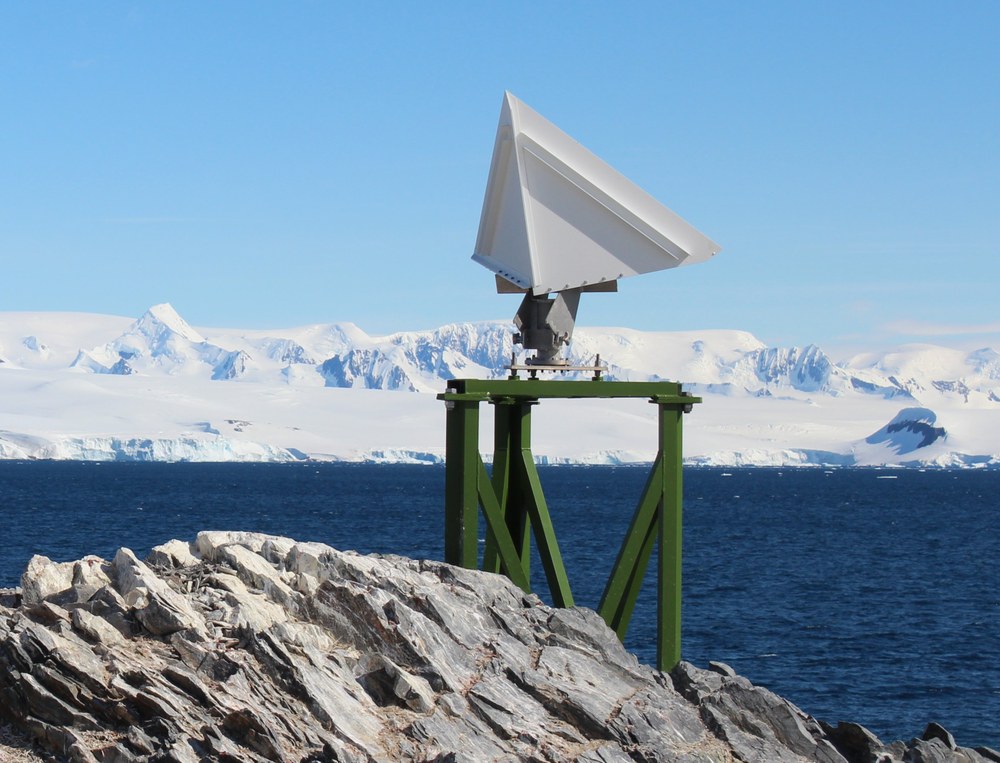Corner-Reflektoren

Corner-Reflektoren werden bei der geometrischen und radiometrischen Kalibrierung und Überprüfung von Synthetic Aperture Radar (SAR)-Sensoren verwendet, da ihre erwartete Position in einem fokussierten SAR-Bild und ihr erwarteter Radarquerschnitt durch die Kenntnis der geodätischen Position ihres Phasenzentrums (das mit der inneren Ecke des Reflektors zusammenfällt) bzw. ihrer Kantenlänge gut definiert sind.
Die Messung der noch nie dagewesenen Lokalisierungsgenauigkeit der deutschen TerraSAR-X-Satelliten TSX-1 und TDX-1, die im Zentimeterbereich liegt, stellt hohe Anforderungen an die Kenntnis der Bodenposition eines Eckreflektors. Um diesen Anforderungen gerecht zu werden, ermöglicht ein Testgelände in der Nähe einer IGS-Referenzstation, wie es bei GARS O'Higgins der Fall ist, eine präzise (< 5 mm) Messung der Position am Boden relativ zu den durch terrestrische geodätische Vermessung gewonnenen Koordinaten der Referenzstation.
Im März 2013 wurden im Rahmen des HGF-Projekts "Hochauflösende geodätische Erdbeobachtung" zwei dreiflächige 0,7 m Eckreflektoren bei GARS O'Higgins installiert. Diese Eckreflektoren sind Teil eines Netzwerks weit verteilter Teststandorte - die anderen befinden sich in Wettzell, Deutschland, und in Metsähovi, Finnland - deren Ziel es ist, die Lokalisierungsgenauigkeit der TerraSAR-X Mission zu bewerten und die weltweite Reproduzierbarkeit der erzielten Messergebnisse zu überprüfen. Das weit südlich gelegene GARS O'Higgins Testgelände spielt aufgrund seiner großen Entfernung zu den anderen Testgeländen in der nördlichen Hemisphäre eine Schlüsselrolle im Rahmen des Projekts.
